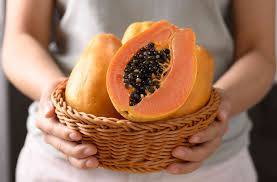The Importance of Eating Pawpaw: A Nutritional Powerhouse
Pawpaw, often overlooked in the world of fruits, is gaining recognition for its impressive nutritional profile and health benefits. Native to North America, the pawpaw tree (Asimina triloba) produces large, custard-like fruits that are rich in flavor and packed with essential nutrients. This article delves into the importance of incorporating pawpaw into our diets, highlighting its health benefits, culinary versatility, and ecological significance.
Nutritional Benefits
Pawpaw is a nutrient-dense fruit, providing an array of vitamins and minerals crucial for maintaining overall health. It is an excellent source of vitamin C, which is vital for immune function, skin health, and antioxidant protection. Just a single serving can provide a significant portion of the daily recommended intake. Additionally, pawpaw contains vitamins A and B6, both essential for vision, energy metabolism, and cognitive function.
The fruit is also rich in dietary fiber, which supports digestive health and helps regulate blood sugar levels. The fiber content can aid in weight management by promoting a feeling of fullness, making pawpaw a great choice for those looking to maintain or lose weight. Moreover, pawpaw is packed with phytochemicals like carotenoids and polyphenols, which have been linked to reduced inflammation and a lower risk of chronic diseases.
Culinary Versatility
Pawpaw’s unique flavor profile, reminiscent of a blend between banana, mango, and melon, makes it an exciting ingredient in various culinary applications. Its creamy texture allows for seamless incorporation into smoothies, desserts, and salads. Pawpaw can be eaten raw, used in baking, or even made into sauces and spreads.
For those looking to experiment in the kitchen, pawpaw can serve as a natural sweetener in recipes, reducing the need for added sugars. Its versatility extends beyond sweet dishes; the fruit can also complement savory preparations, adding depth to salsas and dressings. As food enthusiasts continue to explore local and seasonal ingredients, pawpaw presents an opportunity to create innovative dishes that celebrate its unique qualities.
Ecological Significance
Beyond its nutritional and culinary benefits, pawpaw plays an important role in the ecosystem. The tree is a native species that supports local wildlife, particularly pollinators. Its flowers, which bloom in early spring, attract various insects, including bees, which are essential for pollination. Furthermore, pawpaw fruits provide a food source for numerous animals, including raccoons, squirrels, and birds. By supporting pawpaw cultivation, we also contribute to the preservation of local biodiversity.
Growing pawpaw trees is relatively low-maintenance, requiring little pesticide use, which aligns with sustainable farming practices. As consumers become more environmentally conscious, supporting local farmers who cultivate pawpaw can contribute to sustainable agriculture and promote the consumption of native species.
Conclusion
Incorporating pawpaw into our diets not only enhances our nutrition but also supports local ecosystems and sustainable agricultural practices. With its impressive array of vitamins, minerals, and antioxidants, pawpaw is a valuable addition to any diet. Its culinary versatility opens up a world of possibilities in the kitchen, making it an exciting fruit to explore.
As awareness of the benefits of pawpaw continues to grow, it is essential for consumers to seek out this nutrient-rich fruit. Whether enjoyed fresh, in smoothies, or as part of a gourmet dish, pawpaw offers numerous health benefits while promoting ecological sustainability. Embracing pawpaw is not just a delicious choice; it's a step towards a healthier lifestyle and a more sustainable food system.


